Abstract
In Experiment I some discriminative functions of food pellets were studied by developing a multiple schedule of reinforcement (mult FR 30 FI 3) in which the delivery of a standard laboratory food pellet as a reinforcer set the occasion for reinforcement on every 30th response (FR 30), and the delivery of a sucrose food pellet as a reinforcer set the occasion for reinforcement after a 3-min interval (FI 3). Discriminative stimulus control by the type of pellet was also demonstrated by reversing the operant discrimination and having the standard pellet control the FI 3 and the sucrose pellet control the FR 30. In Experiment II a mult FR 30 FR 30 with two bars was developed; a standard food pellet was followed by an FR 30 on Bar 1 and extinction (ext) on Bar 2, while a sucrose pellet was followed by an FR 30 on Bar 2 and ext on Bar 1. A control rat was placed, for comparison, on a mixed (mix) FR 30 FR 30 schedule with two bars, but neither bar correlated with the type of food pellet. In Experiments I and II the similarity between pellet controlled multiple schedules and multiple primed schedules was discussed, as was the comparability of transitions and effectiveness of control between pellet controlled multiple schedules and multiple schedules providing continuous exteroceptive stimuli.
Full text
PDF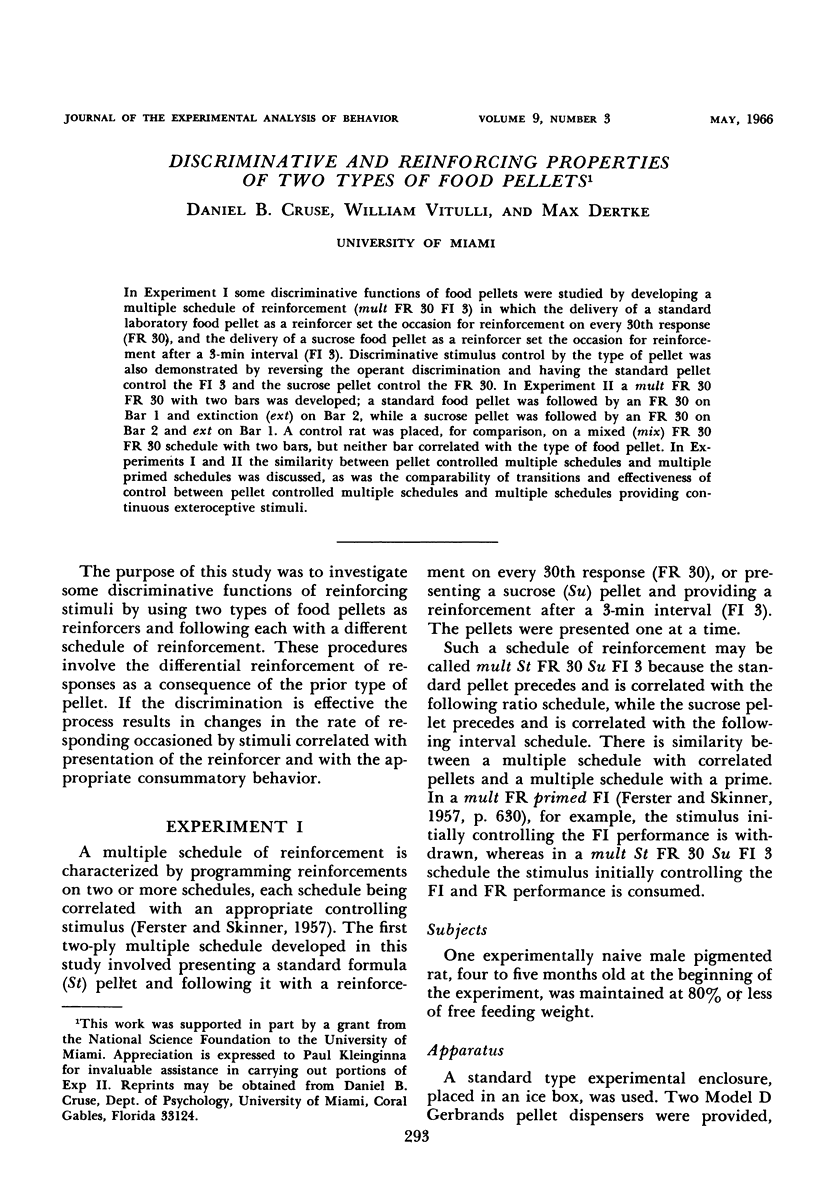
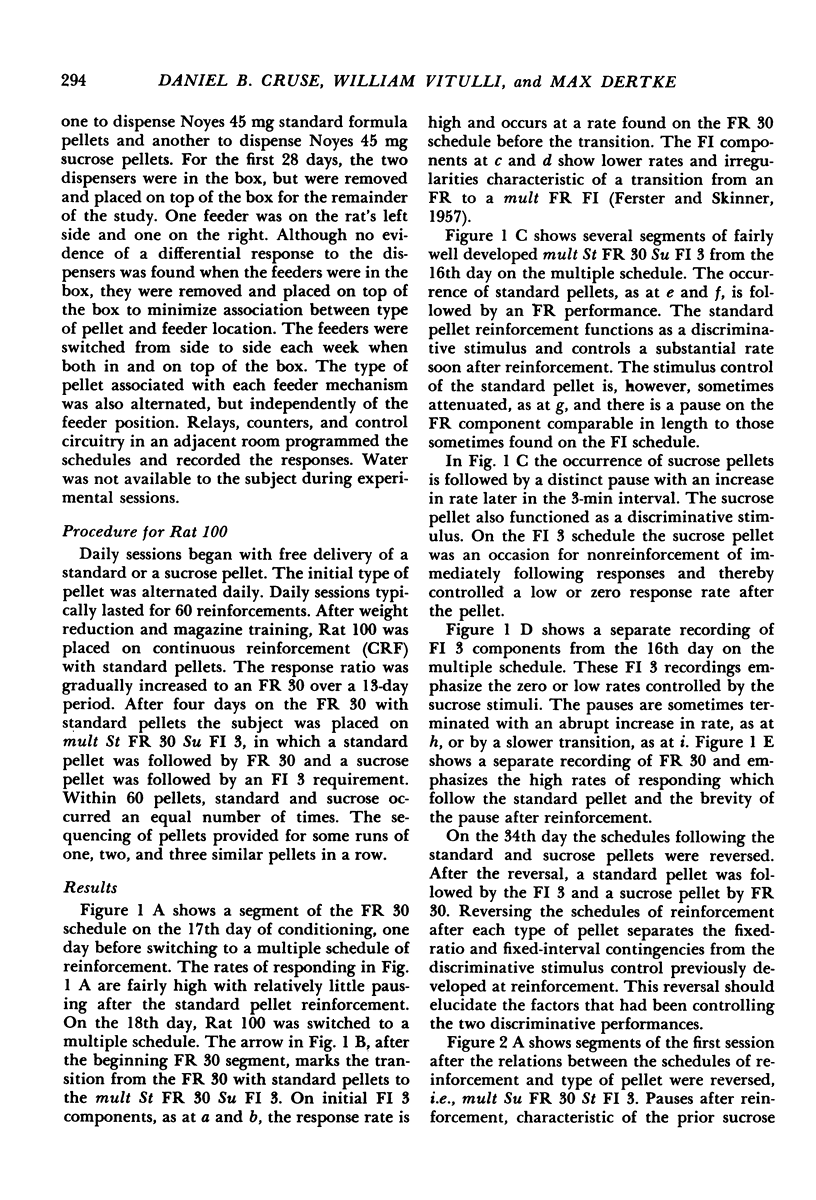
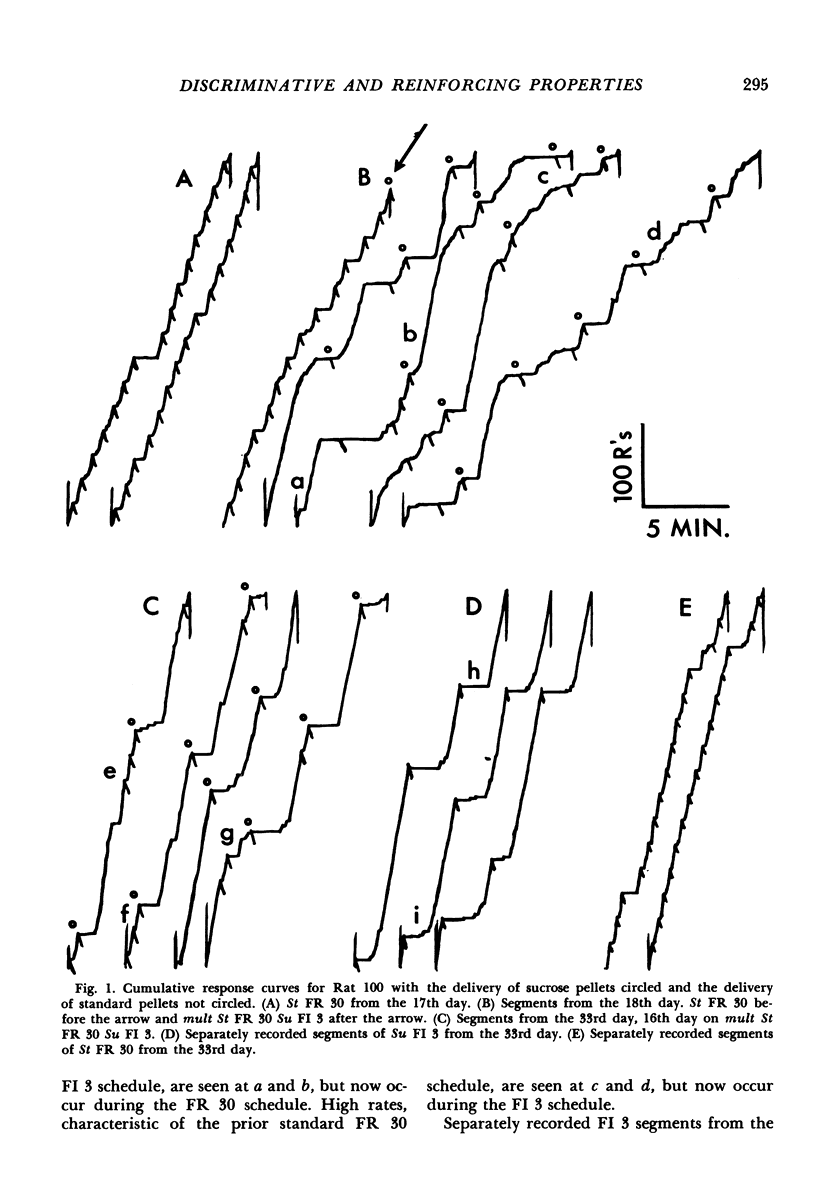

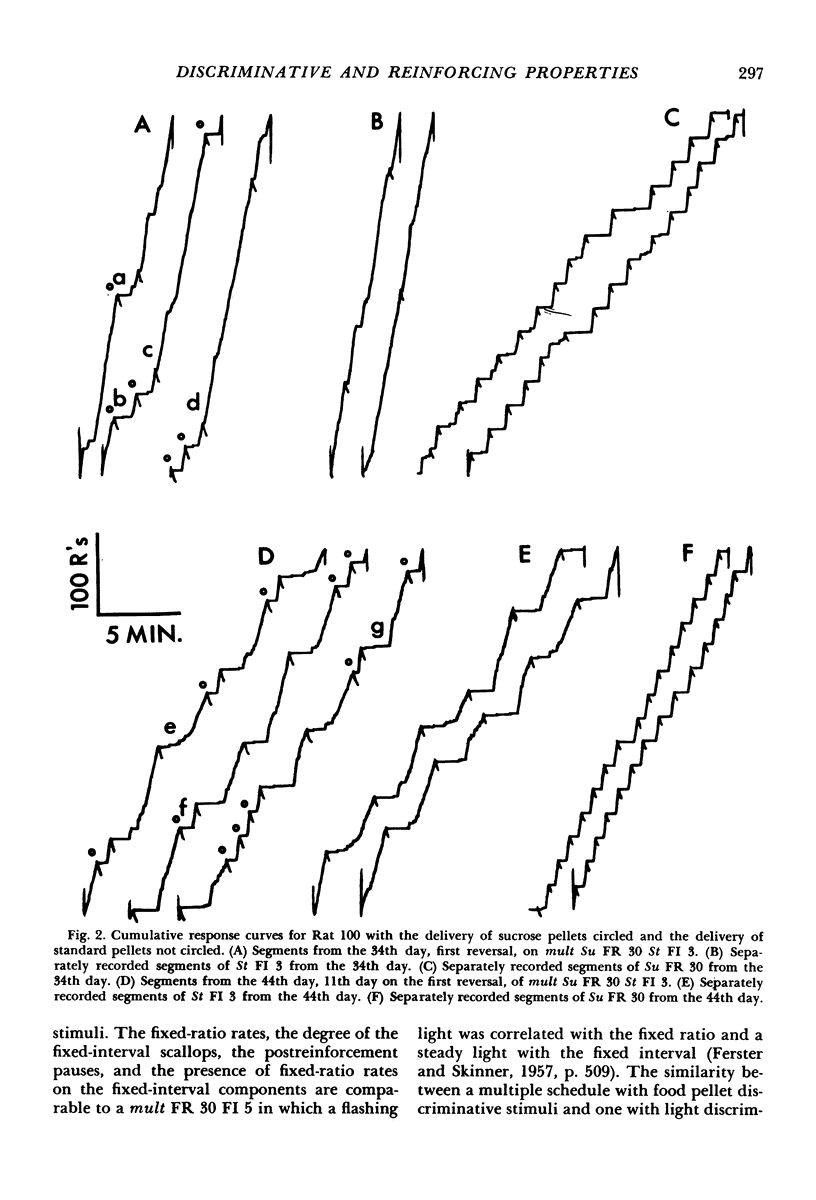
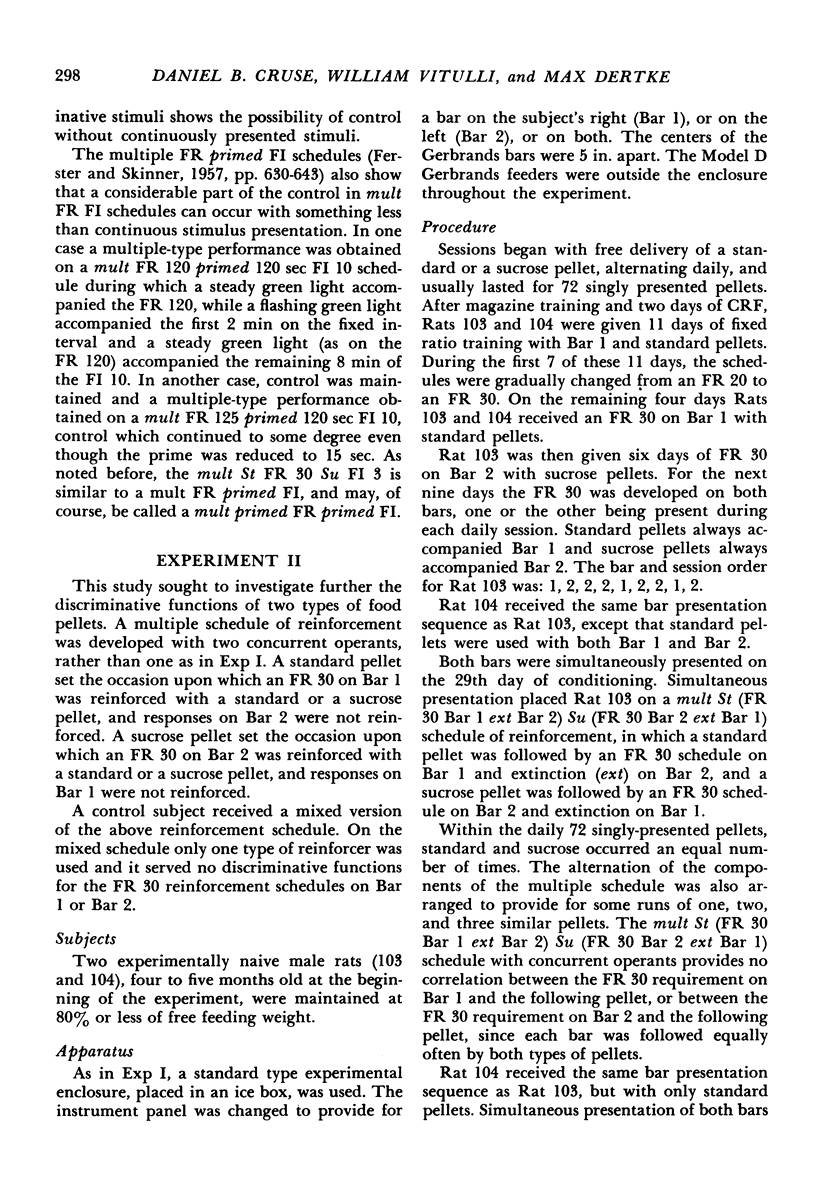
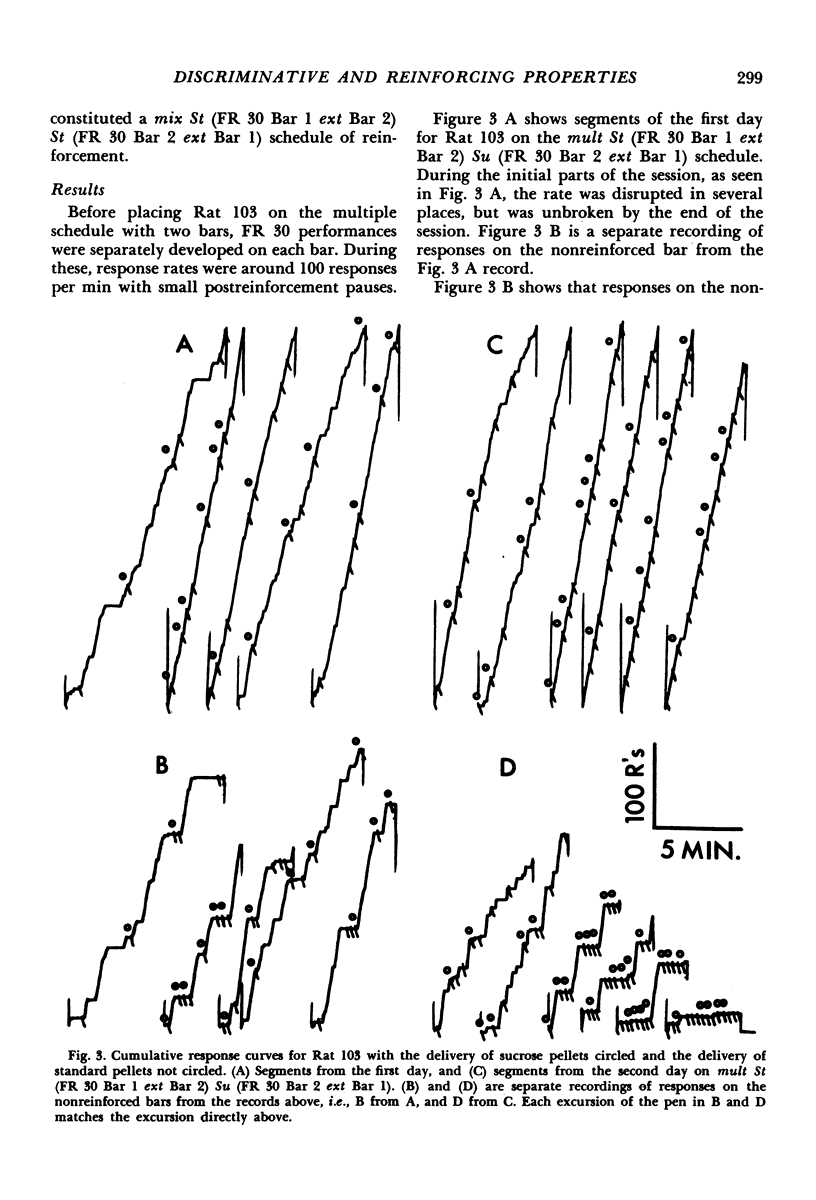
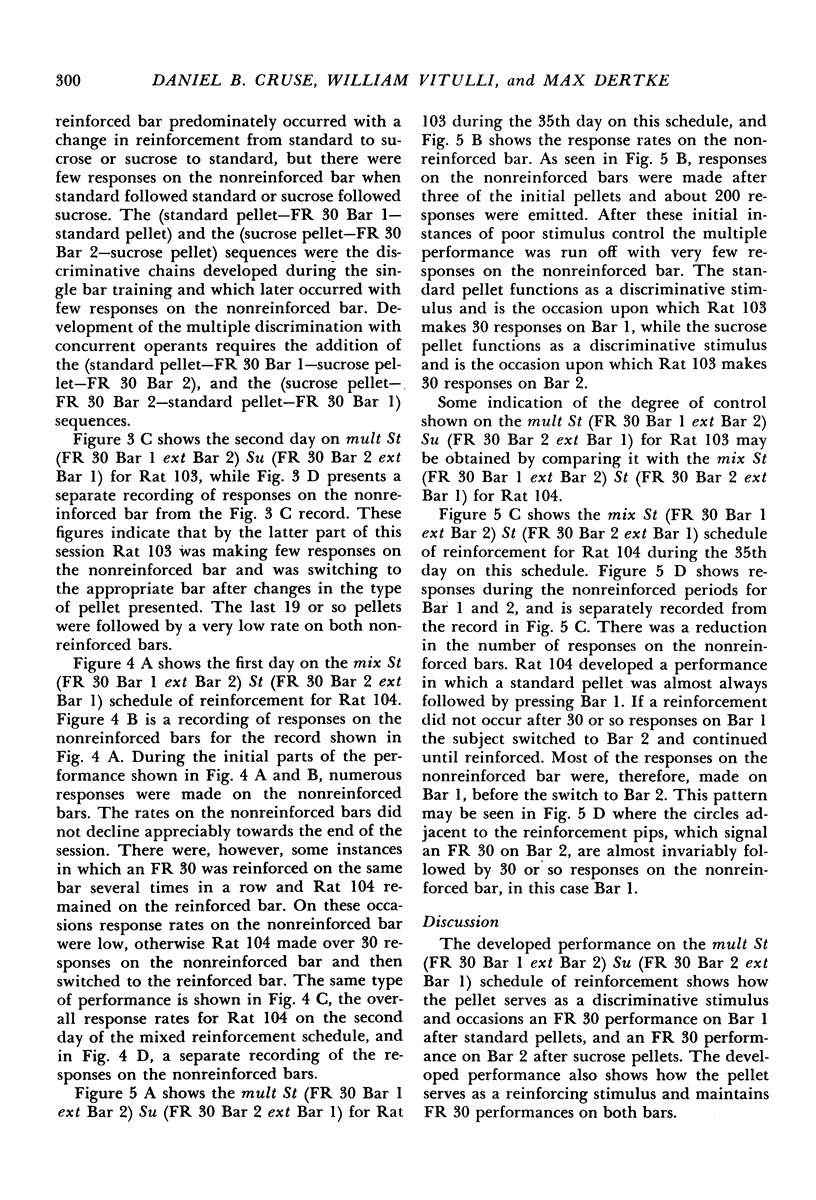
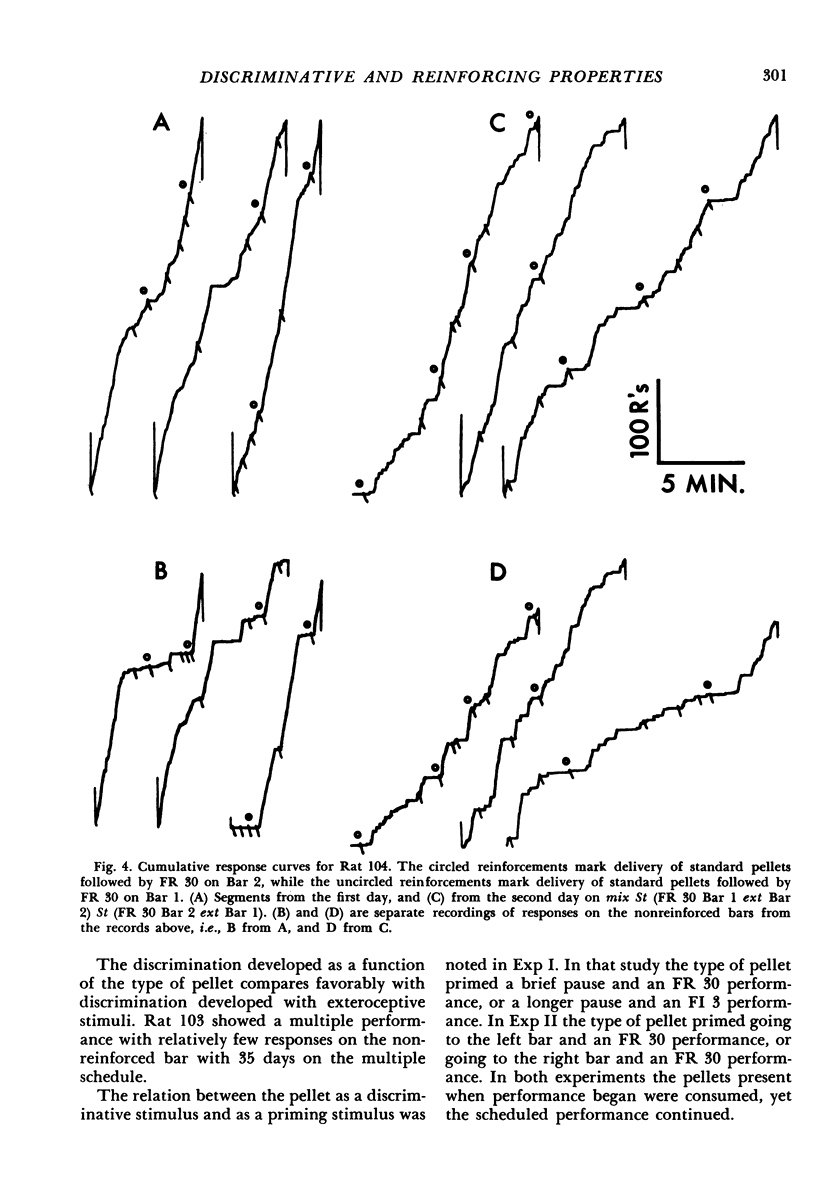
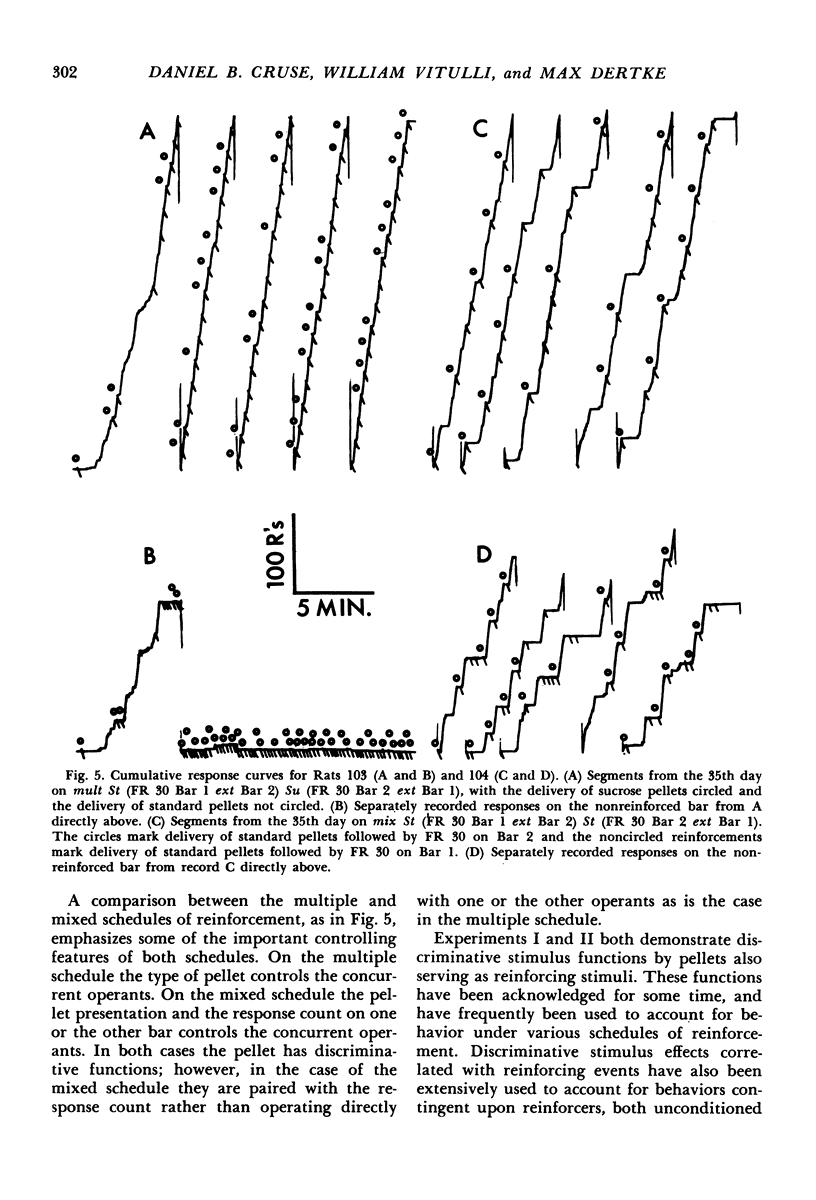
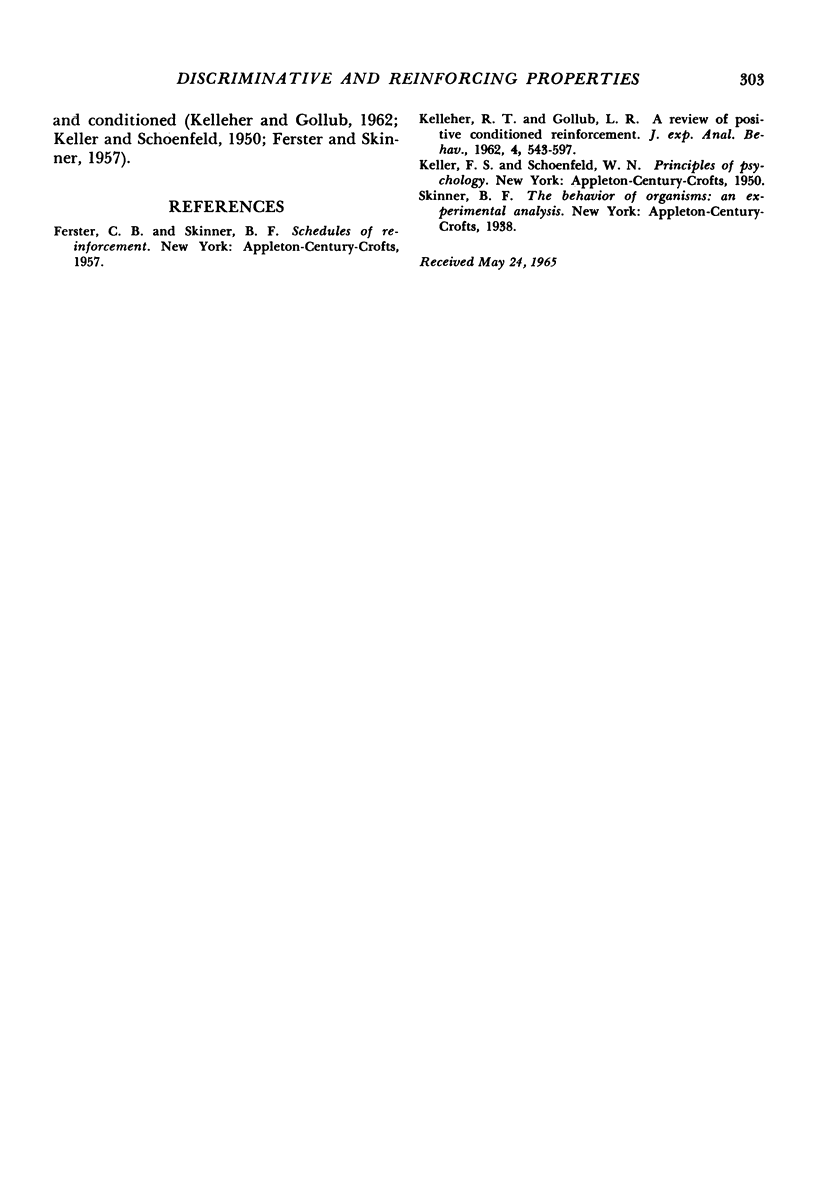
Selected References
These references are in PubMed. This may not be the complete list of references from this article.
- KELLEHER R. T., GOLLUB L. R. A review of positive conditioned reinforcement. J Exp Anal Behav. 1962 Oct;5:543–597. doi: 10.1901/jeab.1962.5-s543. [DOI] [PMC free article] [PubMed] [Google Scholar]


